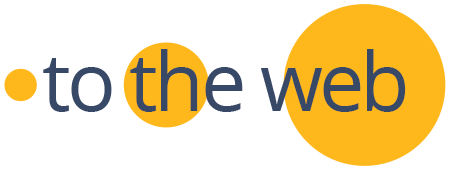10 minutes to complete
This data-driven assessment tool quantitatively evaluates your business in key areas such as strategy, data management, technology infrastructure, talent pool, and governance.
By scoring your existing processes, our scorecard not only highlights your strengths but also pinpoints areas of improvement.
Get Results: Enter your email to receive a personalized analysis, highlighting your team's AI strengths and areas for growth.
Plan Ahead: With a clear view of your organization’s gaps, you can drive your AI roadmap and prioritize efforts to close those gaps.
Your Privacy: Your responses are confidential and only accessible to ToTheWeb. We never share your data.
Please tell us a bit about your company
Current State of AI AdoptionPrimary Objective for Adopting AI
Supporting Objectives (select all that apply)
Size of Your Organization
Your Department
AI Use Case Identification
Select the type(s) of AI initiatives you're considering or implementing:
Strategy and Goals
AI Strategy and Future Planning: How mature is your organization's AI strategy and adaptation planning?
Consider your strategic roadmap for AI initiatives, including goals, resources, and plans for future evolution.
Stakeholder Engagement: Beyond internal teams, how actively are external stakeholders, like partners or customers, involved in your AI initiatives?
Consider how you engage with these stakeholders, gather their input, and communicate any AI-related changes that impact them.
Stakeholder Alignment: Beyond strategic planning, to what extent is there alignment across internal teams—such as executive, IT, and operations—regarding AI initiatives?
Consider the commitment and collaboration levels among various internal teams, including executive, IT, operational, and legal, in supporting AI projects.
Technology Readiness
Focusing on Data-Specific Readiness: How would you rate your organization's data management maturity for AI initiatives?
Consider your data quality, accessibility, and reliability for AI applications.
Technical Infrastructure: How mature is your technical environment for AI solutions?
Consider your existing technology stack, integration capabilities, and technical architecture.
Risk Management: How robust is your risk management framework for addressing AI-related challenges, including bias, privacy, and compliance?
Consider policies and practices aimed at mitigating risks that accompany AI adoption.
Security and IP Protection: How mature is your approach to AI security and IP protection?
Consider your measures for protecting data, models, and AI-generated outputs.
AI Governance: How mature is your organization's AI governance structure?
Consider your leadership oversight, policies, and decision-making frameworks for AI initiatives.
Change Management
Organizational Culture: How adaptable is your organizational culture in terms of embracing AI-related change?
Consider the overall openness and flexibility of teams to integrate AI-driven processes.
Formal Efforts in Communication & Education: How structured is your organization’s approach to educating and engaging employees on AI initiatives?
Consider formal programs for role-specific training and organizational AI awareness.
AI Talent and Skill Development: How well-developed is your strategy for building AI-specific skills within your workforce?
Consider recruitment, training programs, and upskilling efforts specifically aimed at AI proficiency.
AI Implementation & Testing: How mature is your approach to implementing AI solutions
Consider your organization's process for testing AI initiatives, from initial pilots to full implementation across departments.
Workforce Impact: How prepared is your organization for workforce evolution due to AI adoption?
Consider plans for role transformation, skill evolution, and upskilling as AI is integrated.
ROI and Performance
Financial Strategy: How mature is your financial planning for AI initiatives?
Consider your budgeting for technology, training, and operations, including ROI projections and total cost of ownership.
Performance Monitoring: How mature is your process for tracking AI system impact?
Consider your methods for monitoring technical performance, user feedback, and business outcomes from AI initiatives.
CAPITALIZE ON THE IMMENSE POWER OF AI
Talk to us about AI consulting and Training.
